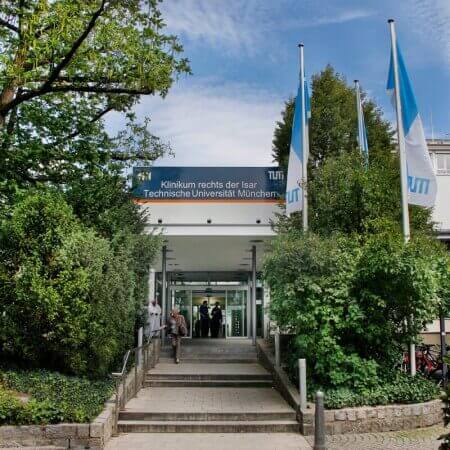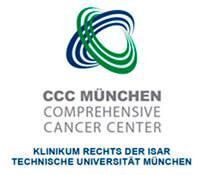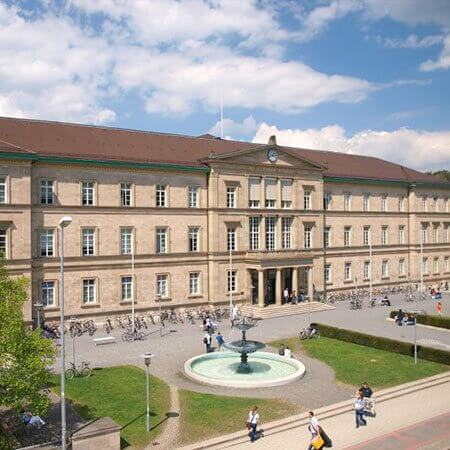Top Hospitals for Neuroendocrine Tumors (NETs) Treatment
Each hospital in this list meets Booking Health’s strict international standards: at least 250 surgeries per year, ISO‑certified quality management, and documented survival outcomes. Our medical board then ranks the clinics by clinical expertise, technology, and patient‑satisfaction scores.

The University Hospital Rechts der Isar Munich was founded in 1834. It combines long traditions with the very latest advances in modern medicine. The medical facility includes 33 specialized departments and 20 interdisciplinary centers, where patients can receive top-class medical care in all medical fields. The hospital annuall





Diagnosis of neuroendocrine tumors (NETs)
Price from:
4615.22
Go to the program Chemotherapy in neuroendocrine tumors (NETs)
Price from:
8964.97
Go to the program Neuroendocrine Tumors (NETs) Treatment with Lutetium-177-DOTATATE
Price from:
18190.19
Go to the program Surgical treatment of neuroendocrine tumors (NETs) with laparoscopic resection
Price from:
24494.91
Go to the program Treatment of neuroendocrine tumor (NET) of the appendix with chemotherapy
Price from:
8924.25
Go to the program Treatment of neuroendocrine tumor (NET) of the appendix with Lutetium-177-DOTATATE
Price from:
18266.4
Go to the program Treatment of neuroendocrine tumor (NET) of the colon with chemotherapy
Price from:
8857.44
Go to the program Treatment of neuroendocrine tumor (NET) of the colon with embolization or chemoembolization
Price from:
31053.01
Go to the program Treatment of neuroendocrine tumor (NET) of the colon with Lutetium-177-DOTATATE
Price from:
18181.84
Go to the program Treatment of neuroendocrine tumor (NET) of the lung with chemotherapy
Price from:
8767.65
Go to the program Treatment of neuroendocrine tumor (NET) of the lung with embolization or chemoembolization
Price from:
31084.33
Go to the program Treatment of neuroendocrine tumor (NET) of the lung with Lutetium-177-DOTATATE
Price from:
17997.05
Go to the program Treatment of neuroendocrine tumor (NET) of the pancreas with chemotherapy
Price from:
8830.29
Go to the program Treatment of neuroendocrine tumor (NET) of the pancreas with embolization or chemoembolization
Price from:
31281.65
Go to the program Treatment of neuroendocrine tumor (NET) of the pancreas with Lutetium-177-DOTATATE
Price from:
18224.64
Go to the program Treatment of neuroendocrine tumor (NET) of the prostate with chemotherapy
Price from:
8666.38
Go to the program Treatment of neuroendocrine tumor (NET) of the stomach with chemotherapy
Price from:
8777.05
Go to the program Treatment of neuroendocrine tumor (NET) of the stomach with embolization or chemoembolization
Price from:
31143.84
Go to the program Treatment of neuroendocrine tumor (NET) of the stomach with Lutetium-177-DOTATATE
Price from:
18270.58
Go to the program 
According to the Focus magazine, the University Hospital Muenster ranks among the top German hospitals! The hospital belongs to the most prestigious medical institutions in Germany. The hospital is distinguished by a high professionalism of its doctors, state-of-the-art technological equipment and the availability of the most ad









Diagnosis of neuroendocrine tumors (NETs)
Price from:
0.00
Go to the program Chemotherapy in neuroendocrine tumors (NETs)
Price from:
7595.24
Go to the program Neuroendocrine Tumors (NETs) Treatment with Lutetium-177-DOTATATE
Price from:
16457.15
Go to the program Treatment of neuroendocrine tumor (NET) of the appendix with chemotherapy
Price from:
7714.26
Go to the program Treatment of neuroendocrine tumor (NET) of the appendix with Lutetium-177-DOTATATE
Price from:
16246.26
Go to the program Treatment of neuroendocrine tumor (NET) of the colon with chemotherapy
Price from:
7554.52
Go to the program Treatment of neuroendocrine tumor (NET) of the colon with embolization or chemoembolization
Price from:
27875.08
Go to the program Treatment of neuroendocrine tumor (NET) of the colon with Lutetium-177-DOTATATE
Price from:
16267.14
Go to the program Treatment of neuroendocrine tumor (NET) of the lung with chemotherapy
Price from:
7689.2
Go to the program Treatment of neuroendocrine tumor (NET) of the lung with embolization or chemoembolization
Price from:
27981.56
Go to the program Treatment of neuroendocrine tumor (NET) of the lung with Lutetium-177-DOTATATE
Price from:
16022.85
Go to the program Treatment of neuroendocrine tumor (NET) of the pancreas with chemotherapy
Price from:
7647.44
Go to the program Treatment of neuroendocrine tumor (NET) of the pancreas with embolization or chemoembolization
Price from:
27646.44
Go to the program Treatment of neuroendocrine tumor (NET) of the pancreas with Lutetium-177-DOTATATE
Price from:
16481.16
Go to the program Treatment of neuroendocrine tumor (NET) of the prostate with chemotherapy
Price from:
7528.42
Go to the program Treatment of neuroendocrine tumor (NET) of the stomach with chemotherapy
Price from:
7683.98
Go to the program Treatment of neuroendocrine tumor (NET) of the stomach with embolization or chemoembolization
Price from:
27586.93
Go to the program Treatment of neuroendocrine tumor (NET) of the stomach with Lutetium-177-DOTATATE
Price from:
16635.68
Go to the program 
According to the prestigious medical publication Focus, the University Hospital Tuebingen ranks among the top five German hospitals! The hospital was founded in 1805, therefore it is proud of its long history, unique experience, and outstanding achievements in the field of medical care, as well as research and teaching activitie









Diagnosis of neuroendocrine tumors (NETs)
Price from:
0.00
Go to the program Chemotherapy in neuroendocrine tumors (NETs)
Price from:
8434.62
Go to the program Neuroendocrine Tumors (NETs) Treatment with Lutetium-177-DOTATATE
Price from:
17079.38
Go to the program Surgical treatment of neuroendocrine tumors (NETs) with laparoscopic resection
Price from:
22783.79
Go to the program Treatment of neuroendocrine tumor (NET) of the appendix with chemotherapy
Price from:
8435.66
Go to the program Treatment of neuroendocrine tumor (NET) of the appendix with Lutetium-177-DOTATATE
Price from:
17438.51
Go to the program Treatment of neuroendocrine tumor (NET) of the colon with chemotherapy
Price from:
8375.11
Go to the program Treatment of neuroendocrine tumor (NET) of the colon with embolization or chemoembolization
Price from:
29218.7
Go to the program Treatment of neuroendocrine tumor (NET) of the colon with Lutetium-177-DOTATATE
Price from:
17492.8
Go to the program Treatment of neuroendocrine tumor (NET) of the lung with chemotherapy
Price from:
8397.03
Go to the program Treatment of neuroendocrine tumor (NET) of the lung with embolization or chemoembolization
Price from:
29266.73
Go to the program Treatment of neuroendocrine tumor (NET) of the lung with Lutetium-177-DOTATATE
Price from:
16933.22
Go to the program Treatment of neuroendocrine tumor (NET) of the pancreas with chemotherapy
Price from:
8458.63
Go to the program Treatment of neuroendocrine tumor (NET) of the pancreas with embolization or chemoembolization
Price from:
29282.39
Go to the program Treatment of neuroendocrine tumor (NET) of the pancreas with Lutetium-177-DOTATATE
Price from:
17340.38
Go to the program Treatment of neuroendocrine tumor (NET) of the prostate with chemotherapy
Price from:
8452.36
Go to the program Treatment of neuroendocrine tumor (NET) of the stomach with chemotherapy
Price from:
8482.64
Go to the program Treatment of neuroendocrine tumor (NET) of the stomach with embolization or chemoembolization
Price from:
29382.61
Go to the program Treatment of neuroendocrine tumor (NET) of the stomach with Lutetium-177-DOTATATE
Price from:
17075.2
Go to the program 

